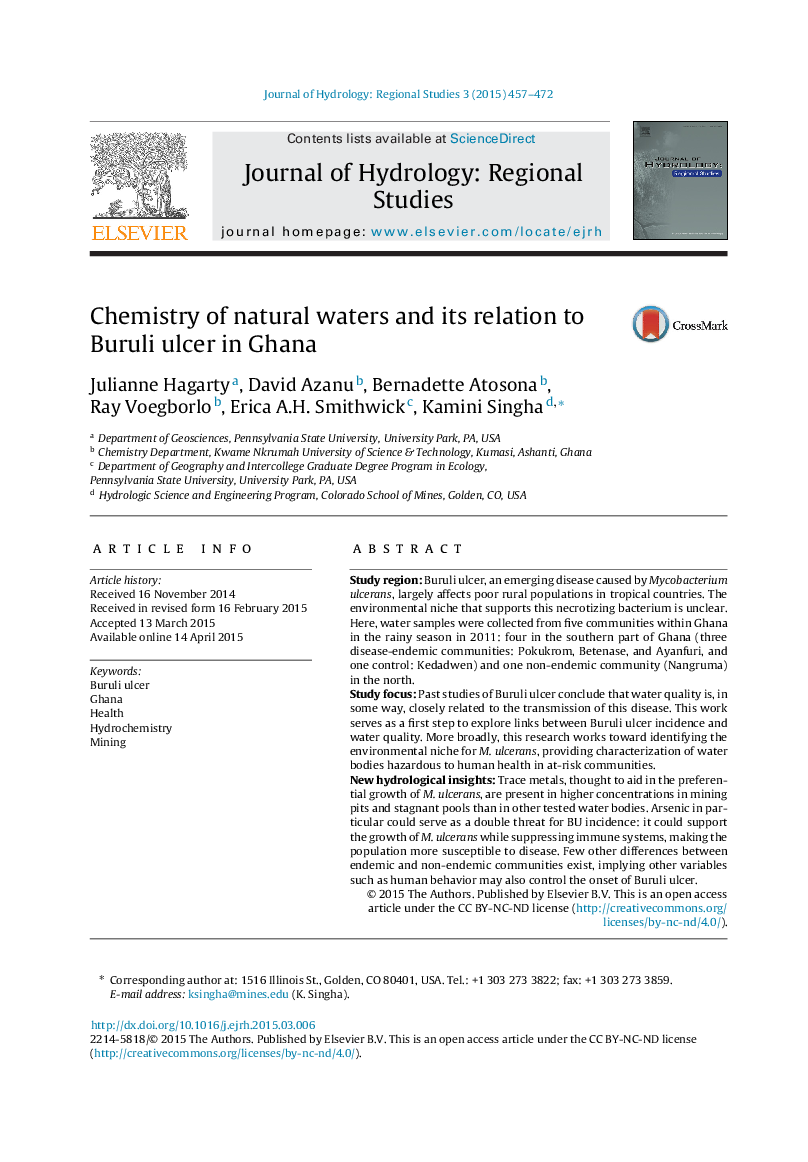| Article ID | Journal | Published Year | Pages | File Type |
|---|---|---|---|---|
| 4435164 | Journal of Hydrology: Regional Studies | 2015 | 16 Pages |
Study regionBuruli ulcer, an emerging disease caused by Mycobacterium ulcerans, largely affects poor rural populations in tropical countries. The environmental niche that supports this necrotizing bacterium is unclear. Here, water samples were collected from five communities within Ghana in the rainy season in 2011: four in the southern part of Ghana (three disease-endemic communities: Pokukrom, Betenase, and Ayanfuri, and one control: Kedadwen) and one non-endemic community (Nangruma) in the north.Study focusPast studies of Buruli ulcer conclude that water quality is, in some way, closely related to the transmission of this disease. This work serves as a first step to explore links between Buruli ulcer incidence and water quality. More broadly, this research works toward identifying the environmental niche for M. ulcerans, providing characterization of water bodies hazardous to human health in at-risk communities.New hydrological insightsTrace metals, thought to aid in the preferential growth of M. ulcerans, are present in higher concentrations in mining pits and stagnant pools than in other tested water bodies. Arsenic in particular could serve as a double threat for BU incidence: it could support the growth of M. ulcerans while suppressing immune systems, making the population more susceptible to disease. Few other differences between endemic and non-endemic communities exist, implying other variables such as human behavior may also control the onset of Buruli ulcer.
